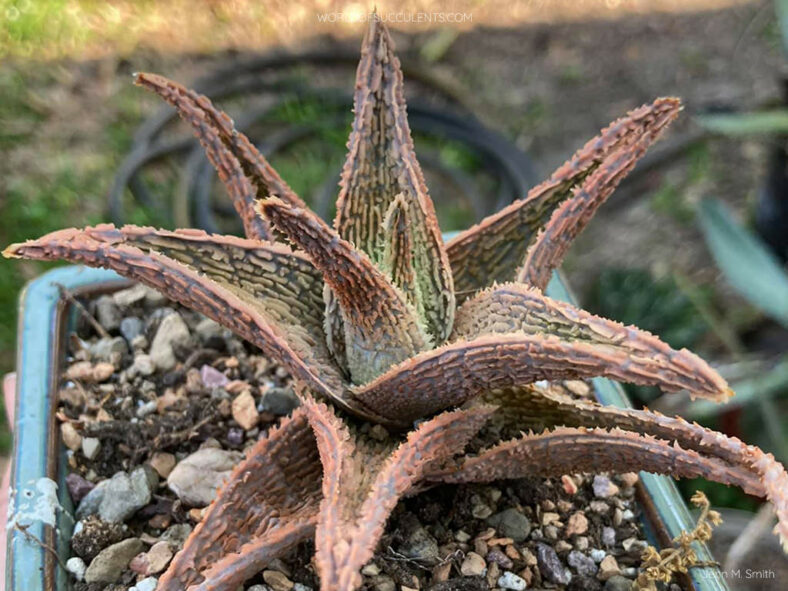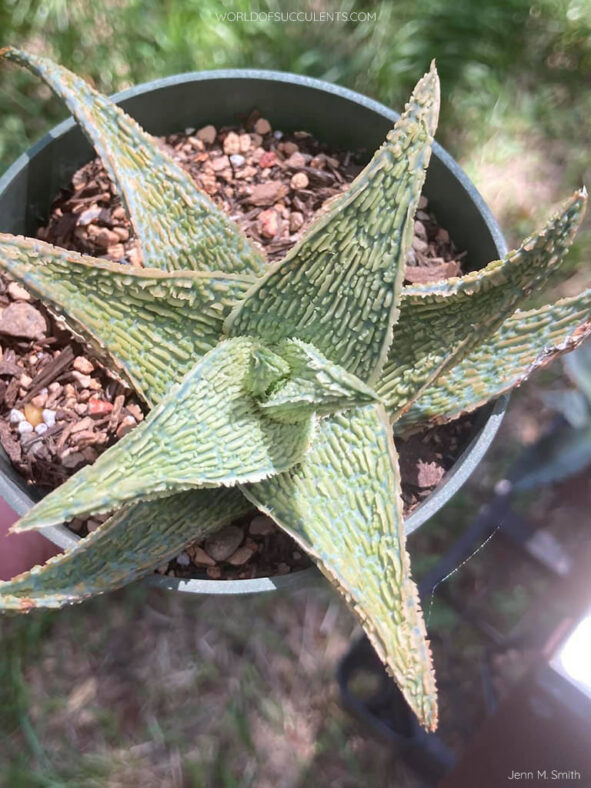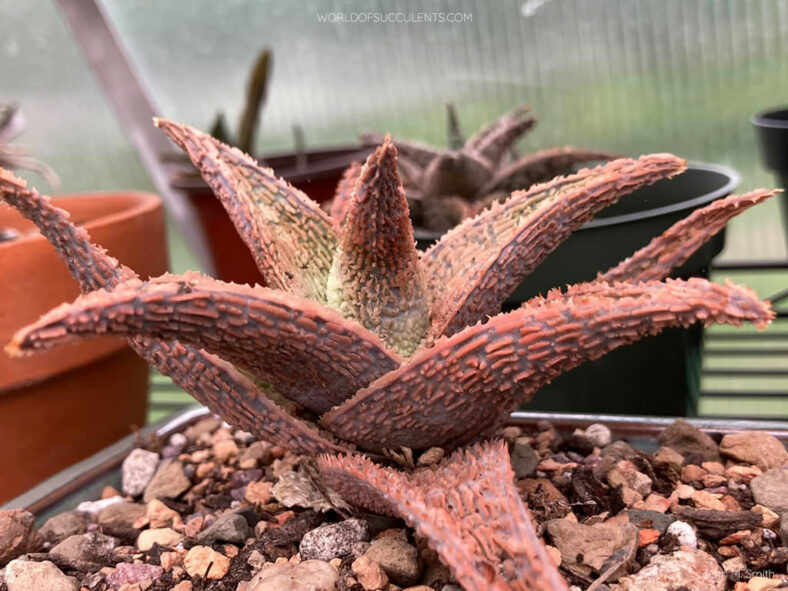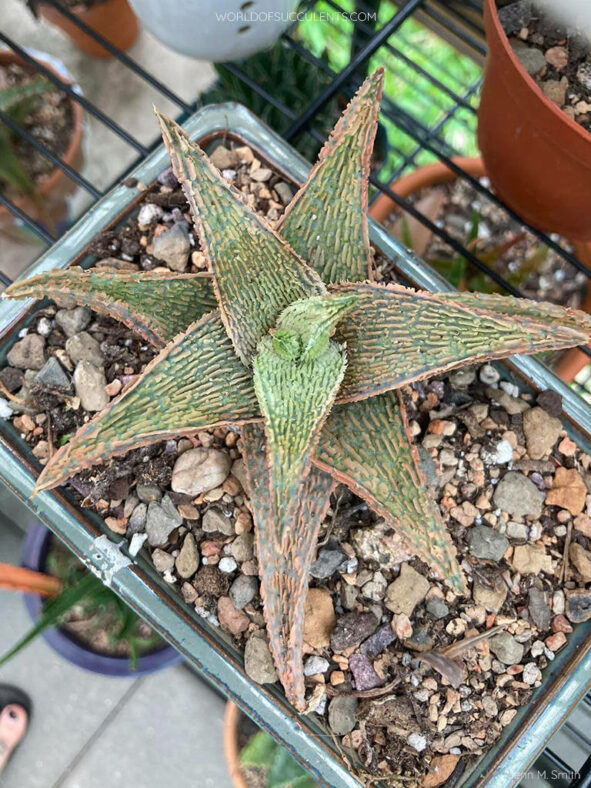Aloe 'Corduroy' is one of Karen Zimmerman's dwarf "fantasy aloes". The hybrid name "Corduroy" is inspired by the textile with a distinctively raised "cord" or wale texture, referring to the distinct longitudinal raised lines and ridges on the leaves of this plant.
Scientific Name
Aloe 'Corduroy'
Scientific Classification
Family: Asphodelaceae
Subfamily: Asphodeloideae
Genus: Aloe
Origin
Aloe 'Corduroy' is a hybrid created in 2007 by Karen Zimmerman, a succulent propagator at Huntington Botanical Gardens. Its parentage is recorded as [Aloe divaricata × Aloe' Dental Work') × Aloe 'Chameleon'].
Description
Aloe 'Corduroy' is a beautiful, small succulent that forms a rosette of green leaves with numerous elongated, whitish to pale yellow tubercles that have a red tinge. The leaves have a broad base and taper to a small point, which is soon lost. The tubercles form raised lines and ridges along the leaf's length. Some tubercles have one or a few teeth. When exposed to intense sunlight, the leaves turn red.
Flowering has not been observed to date.

How to Grow and Care for Aloe 'Corduroy'
Light: When growing Aloe 'Corduroy' indoors, place it in a window that receives plenty of bright, indirect sunlight. Rotate the pot once or twice a week to ensure all sides of the plant receive equal lighting. Outdoors, the plant prefers light shade, especially during the hottest parts of the day.
Soil: Great drainage is essential for growing this plant because too much moisture for an extended period can cause root rot. Use commercial soil for succulents, or make your own well-draining mix.
Temperature: When temperatures drop below 50°F (10°C), it's time to bring this plant inside. It tolerates heat fairly well but will not survive a hard frost. Aloe 'Corduroy' grows best in USDA Plant Hardiness Zones 10a to 11b, with average minimum winter temperatures ranging from 30°F to 50°F (-1.1°C to 10°C).
Watering: This plant requires regular watering but can tolerate brief drought conditions. Water deeply, but only when the soil is dry to the touch. Do not let water stand in the rosettes. Reduce watering during the winter months.
Fertilizing: Although it generally does not require fertilizer, this plant will benefit from extra nutrients. Use a water-soluble fertilizer diluted to half the recommended strength.
Repotting: Repot only as needed during spring. Pick a container that is one size larger and has drainage holes.
Propagation: To propagate Aloe 'Corduroy', remove the offsets from a mature plant from late spring to early summer.
Learn more at How to Grow and Care for Aloe.
Toxicity of Aloe 'Corduroy'
Aloe 'Corduroy' is not known to be toxic to people or pets.
Links
- Back to genus Aloe
- Succupedia: Browse succulents by Scientific Name, Common Name, Genus, Family, USDA Hardiness Zone, Origin, or cacti by Genus
Photo Gallery
Click on a photo to see a larger version.


